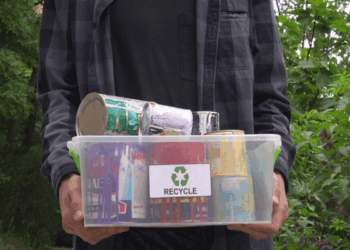 Ontario has passed legislation ushering in full producer-paid recycling of packaging materials throughout the province of more than 13 million people.
Ontario has passed legislation ushering in full producer-paid recycling of packaging materials throughout the province of more than 13 million people.
The Legislative Assembly of Ontario approved the Waste-Free Ontario Act, or Bill 151, on June 1. The law replaces the Waste Diversion Act of 2002, under which producers split the costs of recycling printed paper and packaging with municipalities.
The bill, which was generally supported by representatives of the recycling industry, government and product producers, sets the stage for a transition to complete extended producer responsibility (EPR) for paper and packaging.
In EPR systems, brand owners are charged with funding and managing end-of-life concerns for the products they put on the market. British Columbia has relied on an EPR model in the municipal recycling space for the past two years. No U.S. state has passed EPR legislation for packaging materials.
“The Waste-Free Ontario Act is an important step in creating Ontario’s circular economy – a system in which products are never discarded but re-introduced and reused or recycled into new products,” Glen Murray, minister of the environment and climate change, stated in a press release. “Managing our resources more effectively will benefit Ontarians, our environment and economy and support our efforts to fight climate change.”
The province’s landfill diversion rate has sat at around 25 percent for the past decade.
Lengthy transition expected
Bill 151 makes product makers solely responsible for the costs of curbside recycling and other recycling programs. It overhauls the current regulatory body, Waste Diversion Ontario, into a new oversight and enforcement body called the Resource Productivity and Recovery Authority.
Passage of the bill makes Ontario the largest jurisdiction in North America to implement fully producer-paid EPR.
According to Ontario’s Ministry of the Environment and Climate Change, the province is working to finalize a plan for implementing the law. According to a draft plan, it’s expected to take two to four years to transition to producer control of existing programs for the recycling of municipal hazardous or special waste, electronics and appliances and used tires.
But handing over funding responsibility and control of the Blue Box program, the province’s curbside recycling program for printed paper and packaging, may take longer. Currently, industry group Stewardship Ontario collects fees from printed paper and packaging producers and uses the money to partially compensate municipalities for their costs of collecting and recycling the materials. Transitioning that 12-year-old program could be a lengthy process because government, municipalities and producers need time to iron out important details.
Stakeholders will need to address existing municipal contracts for collection and management of recyclables and the role municipalities’ waste management systems will play in the new system. Also up for discussion is the harmonization of the list of accepted materials, which currently differs by municipality.
The Recycling Council of Ontario, a nonprofit recycling advocacy group, issued a statement saying the group believes the bill will benefit the environment and economy.
“This legislation skillfully ties in economic benefits that will be realized with sustainable practices on a broad scale,” Jo-Anne St. Godard, the group’s executive director, stated. “It has the ability to incentivize businesses to design better products, expand on the collection and recycling to divert materials back into production cycles … and improve recycling rates for business and institutions.”
























